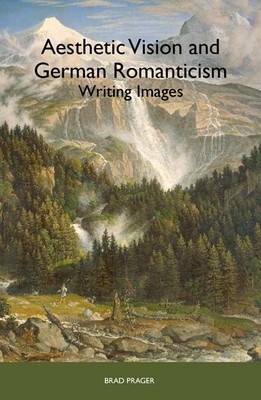
- We will send in 10–14 business days.
- Author: Brad Prager
- Publisher: Camden House (NY)
- ISBN-10: 1571133410
- ISBN-13: 9781571133410
- Format: 16.1 x 22.5 x 2.8 cm, kieti viršeliai
- Language: English
- SAVE -10% with code: EXTRA
Reviews
Description
Crosses disciplinary boundaries to explore German Romantic writing about visual experience and the interplay of text and image in Romantic epistemology.
The work of the groundbreaking writers and artists of German Romanticism -- including the writers Tieck, Brentano, and Eichendorff and the artists Caspar David Friedrich and Philipp Otto Runge -- followed from the philosophical arguments of the German Idealists, who placed emphasis on exploring the subjective space of the imagination. The Romantic perspective was a form of engagement with Idealist discourses, especially Kant's Critique of Pure Reason and Fichte's Science of Knowledge. Through an aggressive, speculative reading of Kant, the Romantics abandoned the binary distinction between the palpable outer world and the ungraspable space of the mind's eye and were therefore compelled to develop new terms for understanding the distinction between "internal" and "external." In this light, Brad Prager urges a reassessment of some of Romanticism's major oppositional tropes, contending that binaries such as "self and other," "symbol and allegory," and "light and dark," should be understood as alternatives to Lessing's distinction between interior and exterior worlds. Prager thus crosses the boundaries between philosophy, literature, and art history to explore German Romantic writing about visual experience, examining the interplay of text and image in the formulation of Romantic epistemology. Brad Prager is Associate Professor of Germanat the University of Missouri, Columbia.EXTRA 10 % discount with code: EXTRA
The promotion ends in 22d.20:57:18
The discount code is valid when purchasing from 10 €. Discounts do not stack.
- Author: Brad Prager
- Publisher: Camden House (NY)
- ISBN-10: 1571133410
- ISBN-13: 9781571133410
- Format: 16.1 x 22.5 x 2.8 cm, kieti viršeliai
- Language: English English
Crosses disciplinary boundaries to explore German Romantic writing about visual experience and the interplay of text and image in Romantic epistemology.
The work of the groundbreaking writers and artists of German Romanticism -- including the writers Tieck, Brentano, and Eichendorff and the artists Caspar David Friedrich and Philipp Otto Runge -- followed from the philosophical arguments of the German Idealists, who placed emphasis on exploring the subjective space of the imagination. The Romantic perspective was a form of engagement with Idealist discourses, especially Kant's Critique of Pure Reason and Fichte's Science of Knowledge. Through an aggressive, speculative reading of Kant, the Romantics abandoned the binary distinction between the palpable outer world and the ungraspable space of the mind's eye and were therefore compelled to develop new terms for understanding the distinction between "internal" and "external." In this light, Brad Prager urges a reassessment of some of Romanticism's major oppositional tropes, contending that binaries such as "self and other," "symbol and allegory," and "light and dark," should be understood as alternatives to Lessing's distinction between interior and exterior worlds. Prager thus crosses the boundaries between philosophy, literature, and art history to explore German Romantic writing about visual experience, examining the interplay of text and image in the formulation of Romantic epistemology. Brad Prager is Associate Professor of Germanat the University of Missouri, Columbia.

Reviews